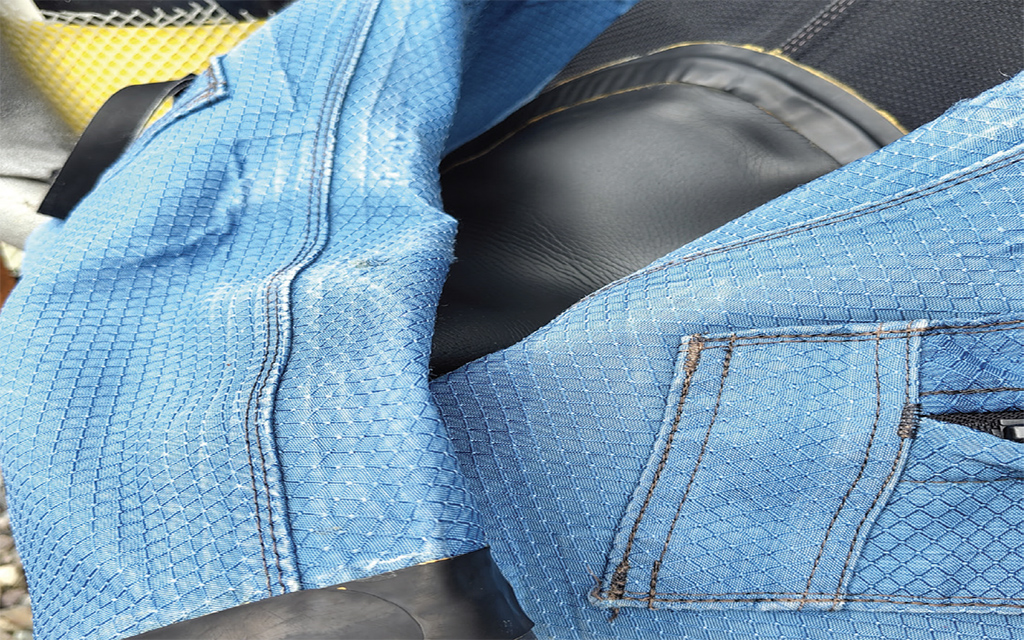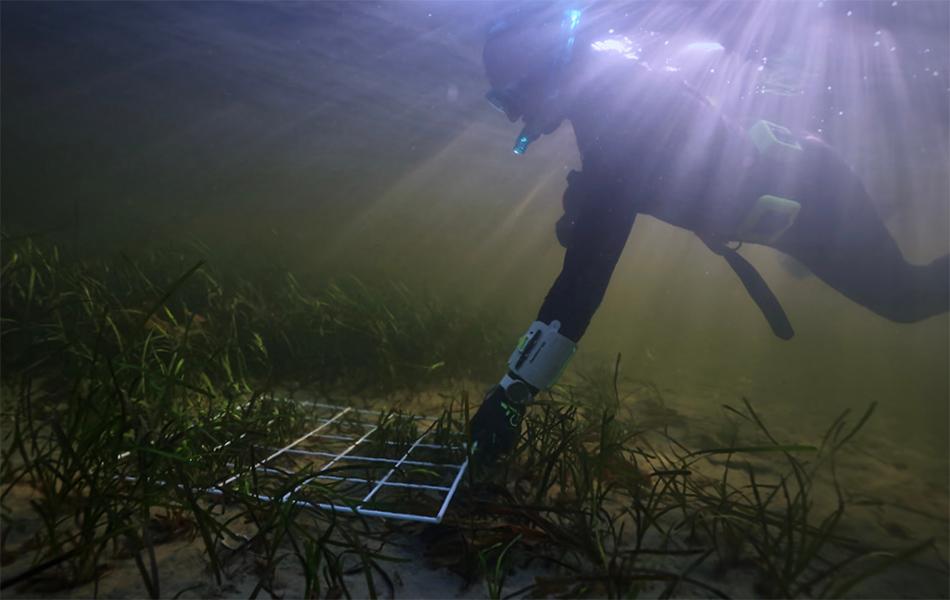
Is your treasured drysuit on its way out? Kerry MacKay has some ideas for prolonging its life or recycling it into something completely different.
Back in May I wrote about neoprene recycling. Now let’s tackle drysuits. My current drysuit is 14 years old. It’s showing its age and has been through more zips than I’d like (thanks to a certain helpful non-diver who carefully FOLDED my zip).
Much of this month’s advice applies to both membrane and neoprene drysuits. We previously learned how neoprene is manufactured, so let’s look at membrane manufacture before we get to the ‘How to’ bit.
Recreational membrane suits are usually made of several materials ‘laminated’ together. For example, tri-laminate is a soft inner fabric, a middle waterproof layer, and an outer layer that can be lightweight or heavy-duty. Add nylon or polyester stitching, around 20 metres of tape to reinforce the seams, a lot of solvent-based glue, plus various fittings… and you have a membrane drysuit.
It is almost always cheaper to repair your existing suit than to buy a new one
I won’t discuss the manufacture of each component. But we can easily see there’s a lot of plastic-based materials (nylon, Cordura, Kevlar…) in a drysuit. Plastic is difficult to safely dispose of, as it never disappears. It only disintegrates into smaller and smaller microplastics over time (as discussed in Jan/Feb issue)
We can’t melt drysuits down like we do glass or plastic bottles. Due to the mixture of materials glued together, it’s not cost-effective to recycle membrane drysuits. What can we do?
You guessed it! Repair and reuse.
It is almost always cheaper to repair your existing suit than to buy a new one, and certainly better for the environment. Some repairs are best left to the professionals, such as replacing the zip and re-taping large areas of the seams. However if you have the time, practical inclination and patience to DIY it, then absolutely give it a go.
I have successfully repaired punctures, replaced seals and valves, and even replaced drysuit boots. I may have accidentally pneumatically launched a saucepan across the garden from my neck seal while doing a pressure test, and my handiwork may not be the prettiest, but the repairs haven’t leaked and have extended the life of my ageing suit.
If you can’t face another soggy dive and hours with a pot of glue, your next best option is to reuse. If your suit still has some life left in it, donate it to a humble trainee or sell it second-hand. Try to buy your new suit second-hand too. You’d be surprised at the number of perfectly good suits being sold after only a few dives.
Eventually, the sad day will come when a suit reaches the end of its diving life. The suit could still be useful for surface watersports. Perhaps donate it to your local watersports club.
Fittings such as the valves, zip, clips and other accessories can be removed to keep as spares or sold as parts. You could upcycle it into some handy waders. Great if you have a pond or enjoy fishing. You can even use your old suit to learn DIY repairs before doing them on your new suit.
The off-cut fabric can be saved and used as repair patches. If you are crafty or know anyone who is, there are lots of ways to reuse the fabric. From upcycled wallets to homemade drybags, dog coats, electronics cases, gear bags, changing mats, and gaiters.
Maybe your community suffers from speeding cars, in which case you could stuff the suit to make it look life-like. Add an old motorcycle helmet and high viz vest to make a great traffic-calming scarecrow, or even just an unusual prop for Halloween.
Maybe one day we will have a new fully recyclable material that drysuits can be made from. Until then we need to look after the suit we have, fix it up when needed, and give it as long a life as possible. I know there are some wonderfully creative divers out there so if you have upcycled or inventively repaired your drysuit, we’d love to hear about it.
Article ‘On the death of a drysuit’ by Kerry MacKay first published in SCUBA magazine, Issue 150 November 2024.

 Author: Kerry MacKay | Posted 25 Nov 2024
Author: Kerry MacKay | Posted 25 Nov 2024



